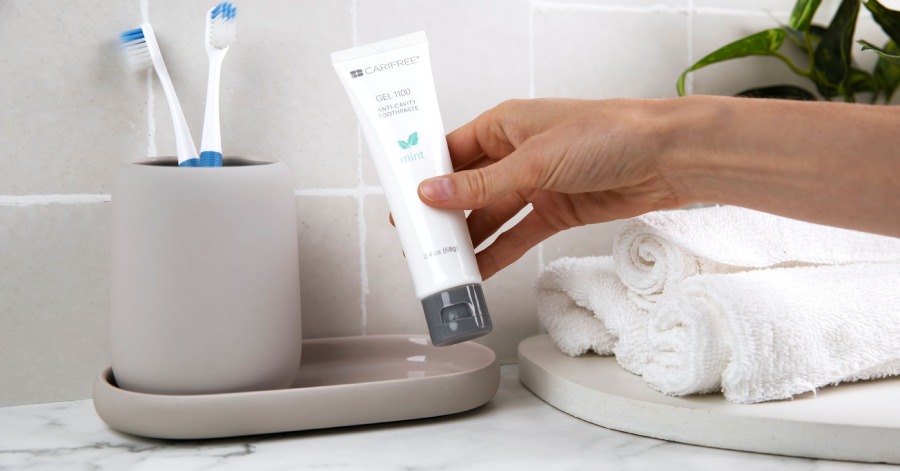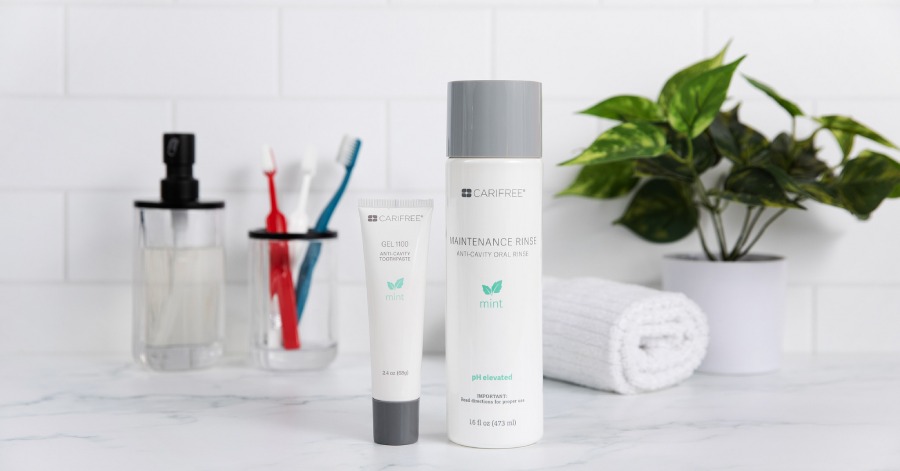Tooth Stain vs Cavity: How to Tell the Difference at Home

You notice a dark spot on your tooth. Is it a cavity or a stain?
Tooth stains change enamel color from foods, drinks, tobacco, or poor cleaning habits. Cavities form holes in enamel from bacteria that cause tooth decay.
This guide explains the causes, symptoms, and treatments of both. Know what you’re dealing with before your next dental visit.
TL;DR Summary
Stains change tooth color and are reversible with brushing or whitening. Cavities form permanent holes and tooth decay that need dental treatment. See your dentist if you have pain, holes, or persistent dark spots.

Tooth Stain vs Cavity: Key Differences Between the Two
Dark spots on your teeth can be stains or cavities. Stains change tooth color on the surface only. Cavities break down tooth structure and cause permanent holes.
You can remove stains with whitening treatments or professional cleaning. Cavities require dental fillings or crowns to stop the damage.
Difference Between Tooth Stain and Cavity
| Feature | Tooth Stain | Cavity |
|---|---|---|
| Definition | Surface discoloration | Structural tooth damage |
| Causes | Coffee, tea, tobacco, aging | Bacteria, sugar, acid, plaque |
| Appearance | Yellow, brown, or white | Dark spots that form holes |
| Location | Multiple teeth or whole tooth | One specific spot |
| Symptoms | No pain or sensitivity | Pain and sensitivity |
| Urgency | Cosmetic concern | Medical emergency |
| Reversibility | Reversible with cleaning | Permanent without treatment |
| Treatment | Whitening or cleaning | Filling or crown |
| Prevention | Limit staining foods, brush daily | Reduce sugar, floss, brush daily |
What Is a Tooth Stain?
A tooth stain is a discoloration on the surface or inside of tooth enamel. Stains change tooth color but cause no structural damage to teeth. They appear as yellow, brown, white, black, or purple marks on tooth surfaces.
Tooth stains include three types. Extrinsic stains form on the outer enamel surface from food, drinks, or tobacco. Intrinsic stains develop inside teeth from injury or medication. Age-related stains combine both types as enamel wears down over time.
Stains affect your smile’s appearance but pose no health risk. You can remove most stains with professional cleaning or whitening treatments. Good oral hygiene prevents new stains from forming on your teeth.
About 56.2% of U.S. adults express dissatisfaction with their tooth color. Tooth stains often lower confidence in social settings.
What Is a Cavity?
A cavity is a hole in a tooth caused by tooth decay. Cavities form when bacteria in plaque produce acid that erodes tooth enamel. This acid attack creates tiny holes or pits in your teeth.
Cavities start as small white spots on enamel. These spots turn brown or black as decay spreads deeper. The damage reaches the inner layers of the tooth and causes visible holes if not treated.
Cavities cause pain, sensitivity, infection, and tooth loss if untreated. You need a dentist to remove the decay and fill the hole. Regular brushing and dental checkups prevent cavities from forming on your teeth.
Cavities are one of the most common health conditions. Over 2.3 billion people worldwide have dental caries in permanent teeth.
Causes of Tooth Stains and Cavities
Tooth stains and cavities have different root causes. Stains come from external substances that discolor your enamel. Cavities form when bacteria and acid erode tooth structure over time.
What Causes Teeth Stains?
Lifestyle habits and aging are the primary causes of tooth discoloration. Common causes of tooth stains include:
- Poor oral hygiene: Plaque and tartar build up on the surface of your teeth.
- Tobacco use: Smoking and chewing tobacco stain teeth brown or yellow.
- Dark-colored foods and beverages: Coffee, tea, and wine discolor tooth enamel.
- Enamel thinning from aging: Worn tooth surfaces expose yellow dentin underneath.
- Certain antibiotic medications: Some drugs cause permanent gray or brown stains.
- Tooth trauma or injury: Damaged teeth turn dark gray or black over time.
- Excessive fluoride exposure: Too much fluoride can cause white or brown spots.
What Causes Cavities?
Bacteria and acid in plaque work together to develop cavities. Common causes of cavities include:
- Poor oral hygiene: Bacteria and food particles stay on teeth.
- Sugary foods and drinks: Sugar feeds harmful bacteria in your mouth.
- Bacterial plaque buildup: Sticky film covers teeth and produces acid.
- Acidic foods and beverages: Acids weaken tooth enamel and cause decay.
- Insufficient saliva production: Dry mouth creates ideal conditions for bacteria.
- Gum recession and root exposure: Tooth roots have less protection than enamel.
- Inadequate fluoride exposure: Teeth lack protection against acid and bacteria.
Protect your teeth from stains and cavities with CariFree Gel 1100 Toothpaste with Nano-Hydroxyapatite. This low-abrasion gel strengthens enamel, neutralizes acid, and remineralizes teeth to prevent decay.

Signs of Tooth Stains
Tooth stains change how your teeth look but cause no pain or discomfort. Common signs of tooth staining include:
- Color spots: Brown, yellow, or white patches on the enamel
- Loss of shine: Dull or cloudy appearance from plaque buildup
- Streaks or lines: Thin colored lines across the tooth surface
- Edge darkening: Darker coloring at the biting edges
- Between-teeth darkening: Discolored areas where teeth touch
Stains often affect several teeth at once or an entire tooth. You notice them most on front teeth after drinking coffee, tea, or red wine. The color may change from yellow to brown based on what you eat and drink.
Unlike cavities, stains feel smooth when you run your tongue across them. You won’t find any holes, pits, or rough spots on stained teeth. The tooth structure stays intact and healthy beneath the discoloration.
Stains signal poor dental hygiene but pose no immediate health risks. Regular dental cleanings remove stubborn stains and restore your natural tooth color.
Symptoms of Cavities
Cavities cause physical pain and visible damage that worsen without treatment. Common signs of cavities include:
- Visible holes or pits: Small holes appear in tooth surfaces.
- Tooth pain: Sharp or throbbing pain occurs without obvious cause.
- Sensitivity: Teeth hurt with hot, cold, or sweet foods and drinks.
- Biting discomfort: Teeth hurt when chewing or biting down.
- Dark spots: Brown, black, or white discoloration on teeth.
- Bad breath or taste: Persistent foul odor or taste in the mouth.
- Gum swelling: Gums become red or swollen around affected teeth.
Cavities worsen without treatment. Early cavities may cause tooth sensitivity to hot or cold foods. Advanced cavities cause constant pain that spreads to your jaw and ear.
You may notice a cavity as a dark spot on a tooth surface. The spot will grow darker and deeper as bacterial acid breaks down your enamel. A visible hole forms when decay reaches the dentin layer beneath the enamel.
Cavities feel rough or sticky when you run your tongue over the tooth surface. You may also feel a small pit or hole in your tooth. Food gets stuck in these holes and causes bad breath or foul taste.
Untreated cavity pain disrupts eating, sleeping, and daily activities. See a dentist immediately if you experience any cavity symptoms.
How to Tell If It’s a Cavity or Stain
You can spot tooth cavities or stains by checking texture, location, and pain response. Use these tests to tell the difference between a tooth stain and a cavity.
Texture Test
Run your tongue across the dark spot on your tooth. Stains feel smooth and flat against your enamel. Cavities feel rough, sticky, or pitted. A visible hole or pit is a clear sign of a cavity.
Spread Pattern
Stains cover the entire tooth or spread to nearby teeth. Cavities target one specific spot on a single tooth. The dark area stays small on the surface but grows deeper into the tooth over time.
Pain Response
Touch the discolored area with your finger or tongue. Stains cause zero pain or discomfort when touched. Cavities hurt when you press on them or bite down.
Test symptoms of a cavity with hot or cold water in your mouth. Stains have no reaction. Cavities cause sharp pain or sensitivity.
Time Progression
Watch how the spot changes over one to two weeks. Stains may fade after brushing or grow darker after coffee. Cavities persist or worsen. They never improve on their own.
See a dentist immediately if you notice pain, holes, or spots that grow darker. Early detection prevents severe tooth damage.
Treatment for Tooth Stains and Cavities
Stain treatments focus on cosmetic improvement while cavity treatments repair structural damage.
How to Treat Stained Teeth
Treat stains with daily brushing, whitening, or cosmetic dental work.
- Professional cleaning: Removes surface stains during dental visits.
- Whitening toothpaste: Lightens mild surface stains with daily use.
- In-office whitening: Provides fast results with professional bleaching agents.
- At-home whitening kits: Brightens teeth using strips or trays.
- Veneers or bonding: Covers permanent stains with cosmetic materials.
At-home stain treatments cost $5 to $100 for toothpaste, strips, or kits. Professional treatments range from $75 for cleaning to $2,500 for veneers or bonding.
Most stain treatments take one to six weeks to show results. You can remove surface stains at home with teeth whitening products. Deep intrinsic stains need professional cosmetic dental treatments.
How to Treat Cavities
Treat cavities with fillings, crowns, root canals, or extraction.
- Dental fillings: Seal holes with composite materials after decay removal.
- Dental crowns: Cover extensive tooth damage with protective caps.
- Root canal therapy: Removes infected pulp and seals the tooth.
- Tooth extraction: Removes teeth with irreparable decay damage.
- Emergency dental care: Treats severe pain and infection with immediate intervention.
Cavity treatments cost $50 to $450 for fillings or $75 to $300 for extractions. Advanced treatments for cavities range from $600 for root canals to $3,000 for crowns.
Your dentist removes decay and fills the hole to stop cavity growth. Severe decay requires crowns or root canals to save your tooth. You should treat cavities immediately to prevent tooth loss and infection.
Prevention of Tooth Stains and Cavities
Over 90% of adults have had at least one cavity in their lifetime. Daily habits and dental care prevent tooth stains and cavities from forming. Follow these easy steps to take care of your teeth.
How to Prevent Teeth Staining
Prevent tooth stains by brushing twice daily and limiting dark beverages or foods.
- Daily brushing: Removes stain-causing particles from tooth surfaces
- Professional cleanings: Removes plaque and tartar buildup during dental visits.
- Rinsing after drinks: Washes dark liquids off teeth before stains form.
- Using a straw: Limits contact between staining drinks and front teeth.
- Quitting tobacco: Prevents brown and yellow stains from smoking or chewing.
Brush your teeth within 30 minutes after consuming staining foods or drinks. Schedule regular dental cleanings every six months to remove surface buildup. Rinse your mouth with water immediately after coffee or wine.
How to Prevent Cavities
Prevent cavities by removing bacteria and strengthening tooth enamel.
- Daily brushing: Removes food particles and bacteria from tooth surfaces.
- Daily flossing: Clears trapped debris between teeth where decay starts.
- Regular fluoride use: Remineralizes enamel with toothpaste, rinse, or treatments.
- Dental sealants: Protect chewing surfaces with a thin protective coating.
- Limiting sugar intake: Lowers the acid that causes tooth decay.
Brush twice daily for two minutes with an elevated pH fluoride toothpaste. Floss once daily to reach areas your toothbrush misses. Visit your dentist every six months for exams and fluoride treatments.
Preventing cavities costs less than treating them. If you’re currently experiencing cavities or at high risk for them, use CariFree Gel 1100 and Treatment Rinse. If you are not high risk but want to prevent future decay, use CariFree Gel 1100 and Maintenance Rinse in your daily routine. Unsure about your risk? Take our risk assessment quiz to find out the best products based on your individual needs.

Protect Your Smile from Stains and Cavities
Stains discolor teeth while cavities create permanent structural damage. You can prevent both conditions through daily brushing, flossing, and regular dental checkups.
Prevention costs far less than treatment and protects your natural teeth. CariFree offers dentist-developed products that strengthen enamel and reduce cavity risk.
Shop CariFree’s science-backed oral care products
FAQs About Tooth Stains vs Cavities
Get quick answers to common questions about the difference between stains and cavities.
Can a Tooth Stain Turn Into a Cavity?
No. A tooth stain cannot turn into a cavity. Stains come from pigments in food, drinks, or tobacco. Cavities form from acid-producing bacteria.
Stained teeth may become more porous and prone to decay if you neglect oral hygiene. Regular brushing and dental cleanings prevent cavities and stains from developing.
How are Cavities Treated?
Dentists use fillings, crowns, root canals, or extraction to treat cavities. There is no at-home treatment for a cavity. Your dentist removes the decay and fills the hole to stop further damage.
How to Remove Stains From Teeth?
Remove stains from teeth through dental cleaning, whitening, or cosmetic work. Dentists remove surface stains during routine visits. At-home whitening strips or toothpaste lighten mild stains in a few weeks. Deep intrinsic stains need professional whitening, bonding, or veneers.
Does a Brown Spot on a Tooth Mean Cavity?
No. A brown spot does not always mean you have a cavity. Brown spots can be stains from coffee, tea, tobacco, or aging. Cavities also appear as brown spots but feel rough and cause pain or sensitivity. Check if the spot has a hole, feels sticky, or hurts when touched to identify a cavity.
Does a Black Spot on a Tooth Mean Cavity?
No. A black spot does not always mean you have a cavity. Black spots can be deep stains from food, drinks, or tobacco use. Cavities turn black when decay reaches advanced stages and forms a visible hole in your tooth. Touch the spot with your tongue to feel for holes or rough areas.
Can You Reverse Cavities?
No. You cannot reverse cavities once they form holes in your teeth. You can reverse early white spots with fluoride and better brushing habits. Bacteria that break through enamel create permanent holes. A dentist must remove the decay and fill the cavity.
Can Remineralizing Toothpaste Heal Cavities?
No. Remineralizing toothpaste cannot heal cavities that have formed holes in teeth. These toothpastes reverse early enamel damage and white spots before they become cavities.
CariFree Gel 1100 and PRO Gel 5000 (available through your dentist) combine nano-hydroxyapatite and fluoride. These ingredients remineralize enamel and prevent cavities.
